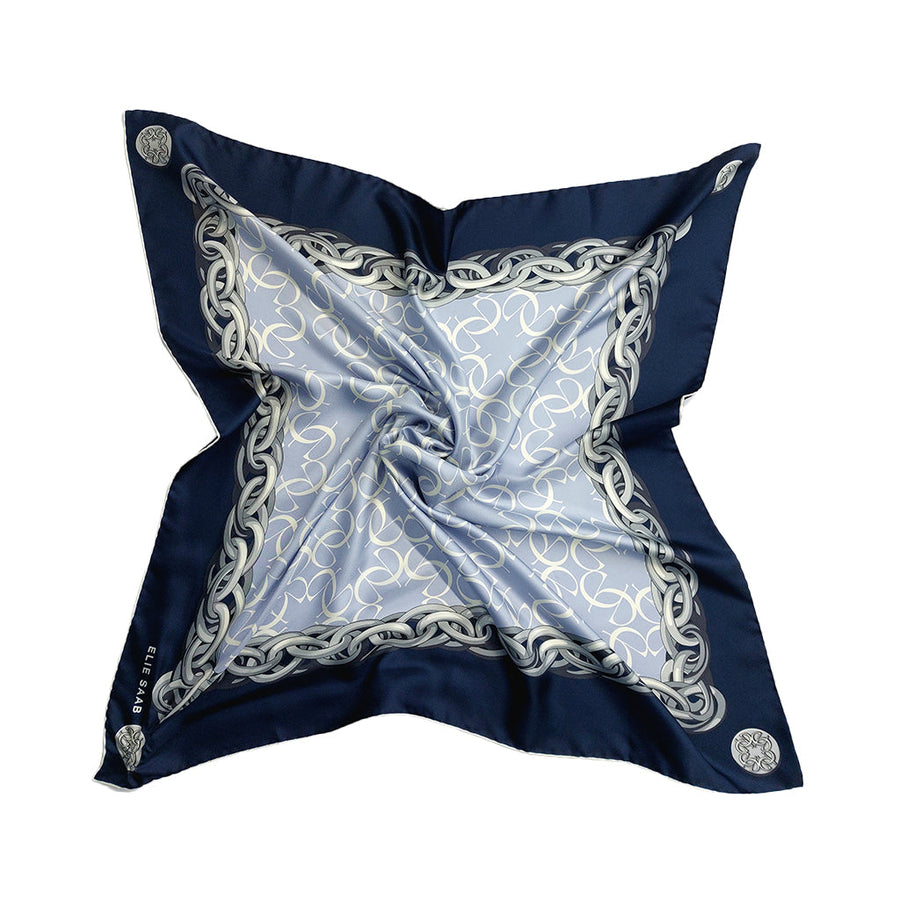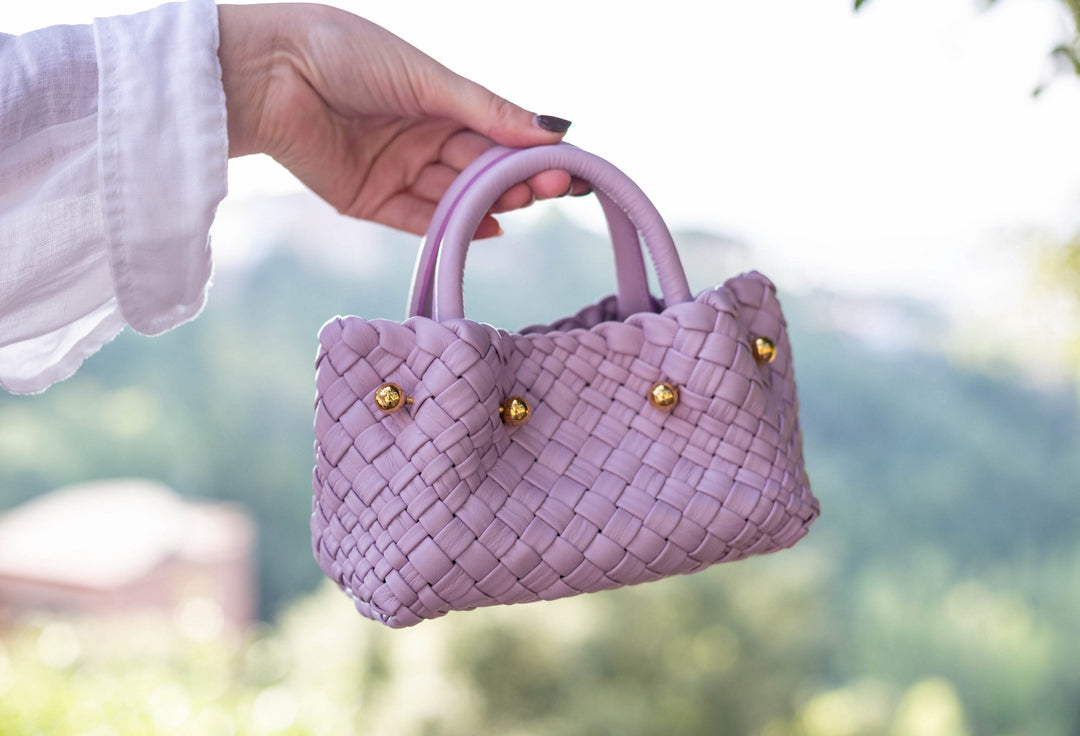The luxury of crocodile and alligator skin: a detailed guide of the examples of artisan Italian Brands such as AZZAIA, BIAGINI, GHIBLI
Crocodile and alligator leather have long been associated with luxury and wealth. Known for their durability, unique texture and rarity, these exotic materials are highly sought after by designers and consumers alike. This article aims to answer some of the most common questions related to crocodile and alligator leather, touching on everything from the difference between the two to determining their value. Crocodile and alligator leather have been a popular choice for decades for luxury goods, especially bags and shoes. Both types of leather have unique qualities that make them ideal for high-end fashion accessories. However, there are differences between the two that are important to consider when choosing the right leather for your luxury item.
Which is better for luxury handbags - crocodile or alligator leather?
When it comes to choosing the best leather for luxury handbags, choosing between crocodile leather and alligator leather comes down to personal preference. Both types of leather are known for their durability, strength and unique texture. Crocodile skin is usually smoother and more symmetrical, while alligator skin has a more pronounced and uneven texture.

One of the key factors in determining what type of leather is best for luxury handbags is the size of the scales. Crocodile skin tends to have smaller and more even scales while alligator skin has larger and uneven scales. Depending on the style and design of the bag, one type of leather may work better than anotherHow to distinguish crocodile skin from alligator skin in designer shoes and bags?
Distinguishing crocodile skin and alligator skin in designer shoes and bags can be tricky without a trained eye. One of the easiest ways to tell the difference is to look at the texture of the skin. Crocodile skin tends to have a more uniform texture with smaller scales that are evenly spaced. Alligator skin, on the other hand, has a more uneven texture with larger and more pronounced scales.
Another way to distinguish between the two skin types is the location of the pores. Crocodile skin has small, round pores that are evenly spaced, while alligator skin has larger, oval-shaped pores that are more unevenly spaced.Are crocodile handbags and purses illegal?
The legality of crocodile handbags and purses depends on a number of factors, including the species of crocodile used to make the leather and the country in which the products are being sold. In some countries, certain species of crocodile are protected by law, and the sale of products made from these animals is illegal.
In the United States, for example, the sale of products made from the American crocodile is strictly regulated under the Endangered Species Act. However, products made from other species of crocodile, such as the Nile crocodile or the saltwater crocodile, may be legal to sell in certain states or under certain conditions.
How can you tell if a crocodile bag is real?
Authentic crocodile bags are typically more expensive than those made from other materials, so it's important to know how to tell if a crocodile bag is real before making a purchase. One way to determine if a crocodile bag is authentic is to look at the texture of the leather. Genuine crocodile leather will have a consistent texture with small, evenly spaced scales.
Another way to tell if a crocodile bag is real is to look at the lining and stitching. Authentic crocodile bags will have high-quality lining made from materials like silk or leather, and the stitching will be even and precise.
How much is crocodile skin worth?
The value of crocodile skin depends on a number of factors, including the species of crocodile, the quality of the skin, and the demand for the material. The most valuable crocodile skins are typically those from the Nile crocodile, which can sell for thousands of dollars per skin.
Other factors that can affect the value of crocodile skin include the size of the skin, the color, and the quality of the scales. In general, larger skins with more uniform scales and a lighter color are more valuable than smaller, darker skins with more irregular scales.
Real crocodile leather vs embossed
There is a significant difference between real crocodile leather and embossed leather that is made to look like crocodile. While embossed leather may look similar to real crocodile leather, it lacks the unique texture and durability of the real thing. Over time, embossed leather may begin to crack and peel, while authentic crocodile leather will maintain its texture and strength.
Difference between crocodile and alligator in terms of using leather for luxury items
In terms of using leather for luxury items, there are several key differences between crocodile and alligator. Crocodile leather is typically smoother and more uniform in texture, with smaller scales that are evenly spaced. Alligator leather has a more pronounced texture with larger and more irregular scales.
Another difference between the two types of leather is the price. Crocodile leather is generally more expensive than alligator leather, due in part to the fact that crocodiles are less common than alligators.
Crocodile leather for sale - where, how much, quality etc.
Crocodile leather is available for sale from a variety of sources, including specialty leather shops and online retailers. The price of crocodile leather varies depending on the quality of the skin and the demand for the material. In general, high-quality crocodile leather can cost hundreds or even thousands of dollars per skin.
When purchasing crocodile leather, it's important to ensure that the skin is of high quality and that it has been treated properly to preserve its texture and durability. Some factors to consider when evaluating the quality of crocodile leather include the size and consistency of the scales, the color of the skin, and the overall condition of the leather. It is best to by from well-known brands that have proven in quality, price and reliability: GHIBLI, AZZAIA, BIAGINI and other.
How to distinguish real crocodile or alligator skin from a fake?
Distinguishing between real crocodile or alligator skin and a fake can be difficult, but there are a few

key factors to look for. One of the easiest ways to tell if a skin is authentic is to examine the texture and scale pattern. Genuine crocodile and alligator skins will have a unique texture and scale pattern that is difficult to replicate with synthetic materials.
Another way to tell if a skin is real is to look at the location of the pores. Crocodile and alligator skins have pores that are arranged in a specific pattern, and these patterns can be used to identify the species of animal from which the skin came.
Differentiating between Crocodile, Alligator and Caiman - are all of them used for leather items?
Crocodile, alligator, and caiman are all used for leather items, but there are differences between the three types of animals. Crocodiles are generally larger than alligators and have longer, narrower snouts. Alligator skin tends to have a more pronounced texture with larger scales than crocodile skin.
Caimans, on the other hand, are smaller than both crocodiles and alligators and have a more uniform texture to their skin. While all three types of animals are used for leather items, crocodile and alligator are generally considered to be the most valuable and sought-after.
How to pick the right Alligator skin for your handbag?
When selecting an alligator skin for a handbag, it's important to consider several factors, including the size and consistency of the scales, the color of the skin, and the overall quality of the leather. Alligator skin with larger, more uniform scales and a lighter color is generally considered to be of higher quality than skin with smaller or more irregular scales.t's also important to consider the intended use of the handbag when selecting an alligator skin. Alligator skin that is intended for use in a larger, structured bag may need to be thicker and more durable than skin that will be used in a smaller bag or a clutch. It's also important to consider the design of the handbag and how the scales will be placed and aligned, as this can affect the overall appearance of the finished product.
Why are Crocodile and Alligator leather Goods so expensive?

Crocodile and alligator leather goods are so expensive because of the rarity and unique qualities of the materials. Crocodiles and alligators are not as common as other types of animals that are used for leather, and the process of obtaining the skin and tanning it is time-consuming and expensive.
The cost of crocodile and alligator leather products can fluctuate over time depending on many factors, including changes in fashion trends and the availability of materials. However, in general, these materials have proven their value over time and may even increase in price as they become rarer.
If you invest in a high quality crocodile or alligator leather item, you can sell it for more in the future if demand for these materials continues to rise. However, it is important to note that the resale value of luxury items can be unpredictable and depends on many factors other than the material they are made from.
In conclusion, crocodile and alligator skin is a popular choice for luxury items such as bags and shoes due to its unique texture and durability. When choosing these materials for your own luxury items, it is important to consider factors such as the size and consistency of the scales, the quality of the leather, and the overall design and intended use of the item. While these materials can be expensive, they retain their value over time and may even increase in value as they become rarer. Crocodile and alligator skins are highly prized materials in the luxury world, revered for their unique texture, durability and exclusivity. Understanding the differences between these materials, as well as how to identify genuine crocodile and alligator skin, is critical to making informed decisions when investing in these exotic items. While the future value of crocodile and alligator leather products may be uncertain, there's no denying the timeless charm and sophistication they bring to the world of luxury fashion.In addition, crocodile and alligator skin have unique textures and scale patterns that make them highly sought after for luxury items. The demand for these materials, combined with their limited availability, drives up the price.
The cost of crocodile and alligator leather products can fluctuate over time depending on many factors, including changes in fashion trends and the availability of materials. However, in general, these materials have proven their value over time and may even increase in price as they become rarer.
If you invest in a high quality crocodile or alligator leather item, you can sell it for more in the future if demand for these materials continues to rise. However, it is important to note that the resale value of luxury items can be unpredictable and depends on many factors other than the material they are made from.


